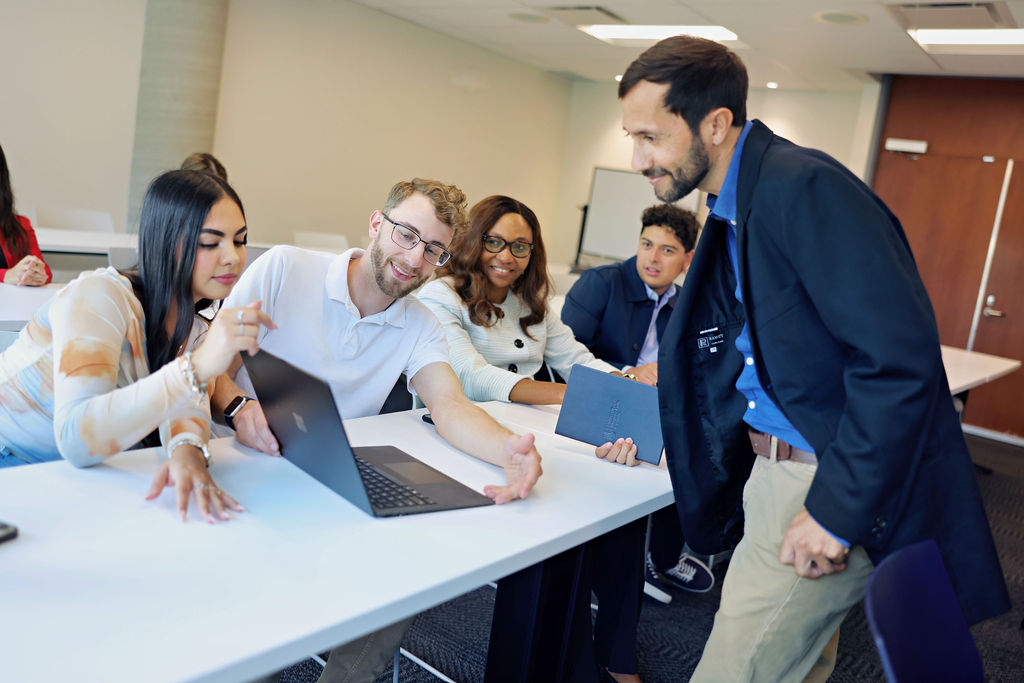Many of our learning experiences have involved a teacher standing in front of us to talk about algebraic equations or Shakespearean sonnets. This method, taken from the hierarchical German model of education, dominates most classroom settings in grade schools all the way up to post-secondary institutions. However, even when something has stood the test of time, it doesn’t mean it should have.
“In this model, students are only the receivers of information,” explains Joe Beer, Director of the Centre of Teaching Excellence at the University of Niagara Falls Canada (UNF). “As such, they don’t have the opportunity to make connections between theoretical teachings and practical applications in the real world. It remains merely informational.”
Equipped with this knowledge, UNF has adopted an approach that encompasses the university’s commitment to workplace preparation and experiential learning. Aptly named the flipped classroom method, it directly reverses the hierarchical method by giving students greater control over their educational experience. Prior to class, they build their foundational knowledge by asynchronously working through theoretical content, such as readings or videos. During class time, the professor then incorporates that content into guided lessons that are creative, engaging, and require active participation. Instead of just hearing about a particular concept, students can apply it to a real-life situation. This is accomplished through activities such as debates, small group discussions, and verbal presentations, many of which students will encounter once they enter the workforce.
“Education is about skill development and learning what to do with content when it arrives,” said Beer. “Hearing things does not assist learning, but doing things does. With this model, we’re focusing on ensuring students know what to do with the content they’re learning so that they can be more prepared for the transition to work.”
The inclusion of this method in higher learning has been gaining momentum. In 1993, Alison King, an academic researcher from the College of Education at the California State University San Marcos published an article titled “From Sage on the Stage to Guide on the Side” in the academic journal College Teaching. While it doesn’t mention the flipped classroom method specifically, the article does highlight the benefits of using class time for active learning rather than the simple relaying of information.
In terms of practical application, Maureen J. Lage, Glenn J. Platt and Michael Treglia, a team of educators and professional economists, researched how flipped classrooms can better accommodate post-secondary students with diverse learning needs in post-secondary economics courses. Their findings were published in the winter 2000 edition of The Journal of Economic Education. In 2007, the method gained true momentum when Jonathan Bergmann and Aaron Sams, two Colorado high school chemistry teachers began recording their lectures for students who missed their class. The result was a deeper understanding of the course content, which inspired Bergman and Sams to develop the Flipped Learning Network, a non-profit online community for educators, as well as share their insights in the books Flip Your Classroom: Reach Every Student in Every Class Every Day and Flipped Learning: Gateway to Student Engagement.
The flipped classroom method has gone from being an intriguing theory to a well-established practice. For Beer, it’s also crucial for allowing UNF students to gain the practical skills necessary for achieving their goals.
“With active approaches to learning, we are trying to get students to learn in a way that is connected to the real world,” he said. “We have to develop our educational experience to help them succeed.”



